By Gouri Satya, Sr. Journalist
A prominent road in Mandi Mohalla is called Sawday Road. It leads from the Mission Hospital main entrance in Sayyaji Rao Road and links Abba Road near the St. Philomena’s Church. The Church is also located on the same Sawday Road. It goes further and links the junction at Hyder Ali Road that takes towards Mahadevapura.
Many Wesleyan Missionaries served in Mysore from the very first day of their arrival in the then Princely State. A few of them became popular by taking an active interest in the social life of the city, engaging themselves in welfare and other activities. They earned the gratitude of the rulers with their timely help and dedicated service and gained their support as well.
G.W. Sawday was one among such missionaries. He was among the few missionaries who served for a record period of 64 years till his death in 1944. His service for the cause of education and health and the welfare of the poor and neglected won him gratitude and laurels. He is the only missionary who can be credited with many landmarks to his memory in Mysore.
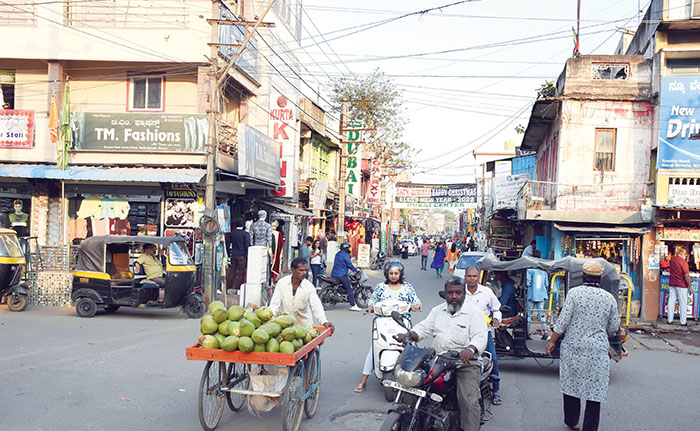
George William Sawday
Born in England on March 10, 1854, George William Sawday was the youngest of six children. After his education, he was accepted to serve the Wesleyan Methodist Ministry in 1873. He came to Bangalore as a Wesleyan Missionary on November 28, 1877, at a time when the Mission needed more missionaries for its activities. He was 22 then and joined the Mysore staff soon after.
Soon after joining Mysore staff, Sawday was assigned to Tumkur to look after an orphanage. Subsequently, he was deputed to Mysore, which became his home for the next six decades, where he lived and served the community. After coming to Mysore, he married Sarah Tort, who was born in Worchester, England. She was 23. Their marriage took place in the English Chapel in Bangalore. They had seven children, three sons and four daughters.
About his arrival in Mysore, Sawday says, “I first came to the Mysore State in the year 1876, sixty-four years ago, and except for six years spent in England, have ever since been in close touch with Mysore affairs. It has been to me a great honour, and a very great pleasure, to be at times brought into somewhat close contact with the members of the Royal House of Mysore.”
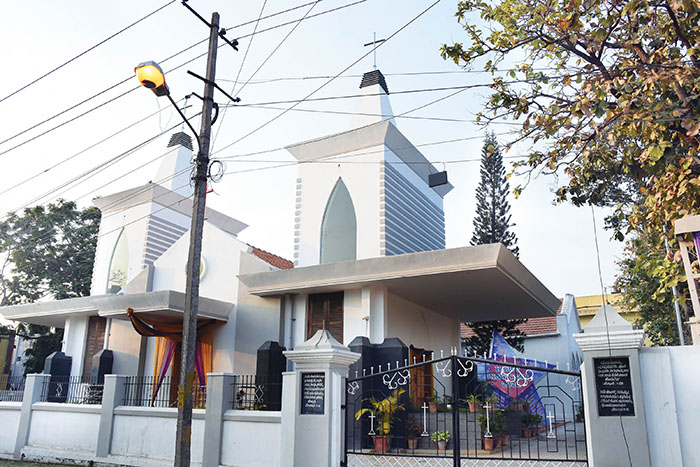
Service during famine
When Sawday arrived in Mysore, the first stage of the great famine was sweeping across the State. Within a year, it became severe. The failure of the monsoon for two successive years, led to the terrible famine (1877-78) lasting for over three years continuously. There was a serious shortage of food, fodder and water. It caused great havoc in the State, took away the lives of hundreds of people and the cattle. The death toll was so huge it accounted for one-fourth of the population in the State. Many children were parentless and they needed immediate care and attention.
People hit by the famine desperately needed help. It did not matter who offered them help. Seeing great suffering all around, the Wesleyan Missionary rose to the occasion. It took up many relief activities and began to serve the suffering poor and save their lives. The Maharaja’s Government alone was not in a position to face the mighty task of meeting the requirements of food and shelter of the famine-hit. It was at this critical juncture, the Wesleyan Missionary stepped forward to support the Government.
The Government was also looking for sharing the task of caring for the orphans to Societies whose credentials and resources were found satisfactory. Christian Missionaries stood to these orphans as local parents. Soon after his arrival, Sawday too joined the Missionaries in providing relief to the suffering in Mysore City.
25,000 orphans in relief camps
Intensive efforts by the Government and service-minded organisations resulted in about 25,000 orphans being accommodated in the relief camps. Of these orphans, around 50 boys and girls were sent to Tumkur for care. Here, they were received by Sawday who accommodated them in the Christian Home. He established an orphanage, where many of the orphans were trained in agriculture.
Soon after, he was appointed as Superintendent for the Circuit. He established several schools, including the Fort Girls’ School and the Girls’ Schools at Sira. Both he and his wife took deep interest in the work of the orphanage they had established for the orphans. Much of their work was amongst the poor and socially neglected class. They toiled day and night to help the poor and the parentless children.
He donned the role of a farmer, builder, mechanic, rope-maker and schoolmaster by turns, while his wife cared for the women and the girls’ schools. She was a constant helper in her husband’s work. The orphaned boys were trained as farmers, weavers, smiths, carpenters, and some as teachers and catechists. There were 600 or 700 children in the vernacular schools of which 200 or 300 were under his care in the schools he had established.
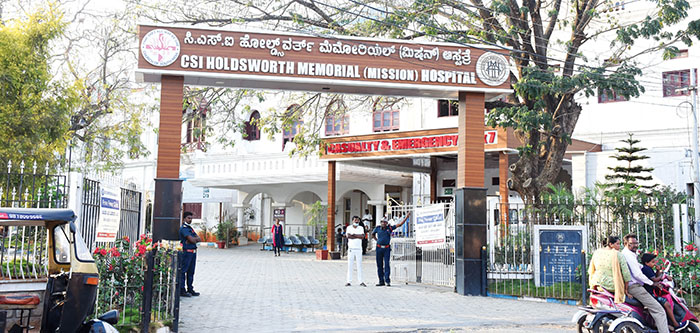
Back to England and return
All this work put too much pressure on Sawday and his wife. The orphanage, with its 130 boys, proved a great strain on Sawday’s resources. By February 1894, both of them suffered serious health problems. Added to this, they had lost their two children. This compelled them to return to England. The return to England turned tragic for Sawday. His wife, Sarah Trot Curnock, died on July 4, 1895, at the age of 42, in London.
Sawday decided to return to Mysore but soon after visited England again in 1898 as part of his mission to raise funds for the hospital and a school in Mysore. Queen Victoria, who was also the Empress of India, donated funds to set up a girls’ school in Mysore. Returning to Mysore in 1900, Sawday completed the construction of the Victoria Girls’ School on the Sayyaji Rao Road in 1903, now located in Nazarbad.
He also turned his attention to the construction of the Holdsworth Memorial Hospital to the memory of Mary Calvert Holdsworth, who had laid the plans for the hospital. Sawday took up the plans and with his skill and devotion made the hospital “a home of compassion” and fulfilled Mary Calvert’s aspiration to build a hospital in Mysore, where she was serving the Mission. This he could accomplish with the money he had raised in England.
The construction was completed in 1906. The hospital was hailed as “one of his greatest and important contributions to the Mysore citizenry.” Because of his labour and extraordinary efficiency, it became one of the largest and best-equipped Mission Hospitals in India in the later years. Sawday also used the donation given by his sister to establish the Mary Calvert boarding home in 1906 in Nazarbad.
Social service in real terms
Besides Mysore and Tumkur, Sawday worked in Mandya, Chamarajanagar and its surrounding places. He purchased lands in those places and built orphanages, boarding homes, schools, hospitals besides prayer halls. He authored a book, ‘Some Memories of the Royal House of Mysore’, and it was printed and published by the Wesley Press and Publishing House, Mysore, in 1941.
Sawday also managed reading rooms and places of worship, supervised the construction of housing for Indian Ministers. He established “Sawday Fund” to help pastors after their retirement.
Sawday was instrumental in constructing a church at Idgah, now Tilak Nagar, which was later dedicated to him. The Sawday Memorial Church was among the churches constructed by the Wesleyan Missionaries in Mysore. The Sawday Church, now part of the Church of South India (CSI), was constructed in 1924, close to the Mission Hospital.
Recognising his services, the British monarch conferred on him the prestigious Kaisar-I-Hind title in 1923. The title and the gold medal were an official recognition of his public service in India. After his retirement in 1931, Sawday became a supernumerary and returned to England the next year in 1932.
But he returned to Mysore soon after to continue his work till the end. Even at that age, he continued to be very active in the district affairs of the Mission and in particular concerning the Holdsworth Hospital that was dear to him. Tall, well-built and friendly, he had cordial relations with the Maharaja, Krishnaraja Wadiyar IV, who helped him in constructing schools and hospitals.
He was the Secretary of the Mysore District Evangelistic Band for over 50 years. The ‘Sawday House’ on Vani Vilasa Road of Lakshmipuram, a heritage structure, was his residence, where he lived with his wife and children, who were born there. The bungalow was a gift by the Maharaja.

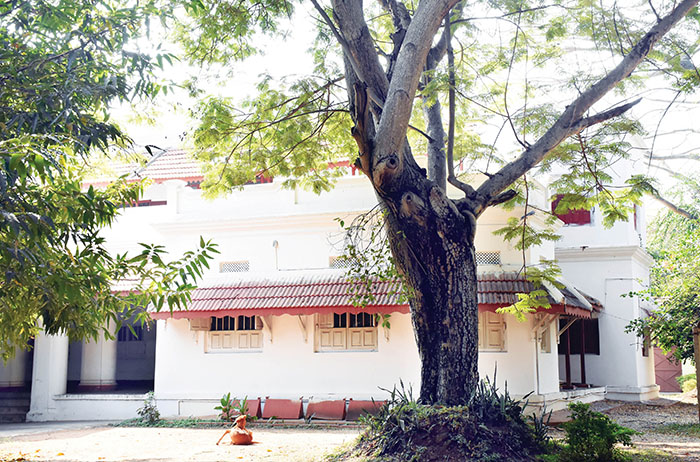
Tribute to yeoman service
Sawday passed away on September 16, 1944, in Mysore at the age of 89. Thousands of people turned up for his funeral at the St. Bartholomew’s Church Cemetery. A church was also constructed in Mandya, as a tribute to his yeoman service to the society and was dedicated to his memory. The C.S.I. Sawday Memorial Church was constructed in 1924 there. The churches he built in Bengaluru and elsewhere were named in his honour.
Rev. Sawday served diligently in Mysore for more than 60 years. His greatest and important contribution to the people of Mysore was the Holdsworth Memorial Hospital, popularly known as “Mission Hospital”. The hospital stands as a great memorial to his dedicated life and untiring efforts in serving the needy. He built it collecting subscriptions and saw to its regular maintenance. The royal family lent its valuable support with generous donations and saw that it was placed on a sound financial footing. Through his service and the three memorials in Mysore City — the Sawday Church, the Sawday House and the Sawday Road — the servant of Christ stands tall among the Wesleyan Missionaries who served in Mysore.



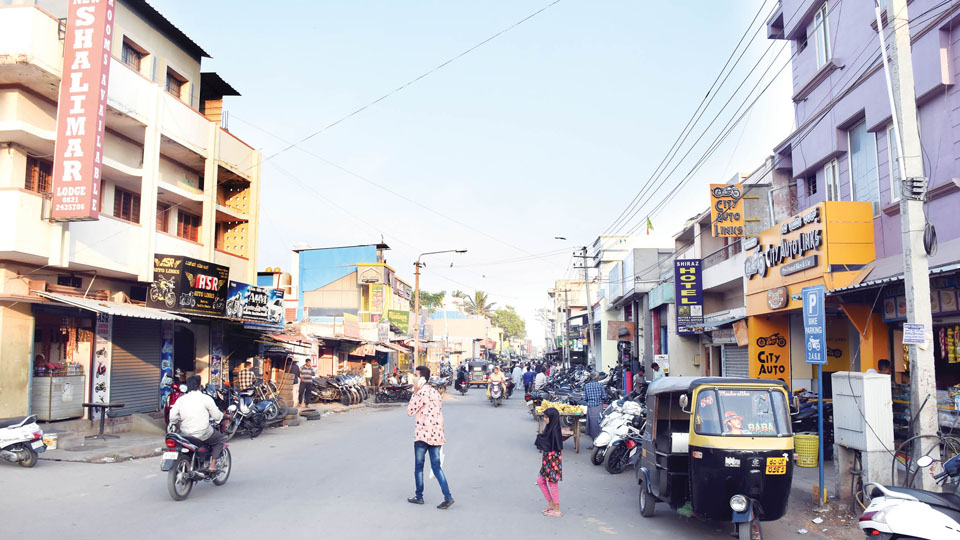




Interesting article on the darker history of Mysuru. It needed a foreigner, albeit a missionary person to take lead and attempt to solve the plethora of problems that the city faced, and perhaps Mysoreans did not do much about them. Orphan children and their treatment not in Mysore, but in India is a recurring problem even today. Decades ago, this hospital like the CMC hospital in Vellore, which was also constructed by another missionary, an American female physician-Ida Scuddar.
These 2 hospitals when administered by foreign missionary doctors, were charging almost nothing for the poor and provided excellent medical care. Come late 1960s, everything changed as , foreign missionary doctors were frowned upon at best, and at worst detested, because they had better qualifications and skills as doctors ,and above all kindred ethos. Indianised missionary administration brought mediocrity, greedy charges and bad attitude towards patients-typical core of Indian characteristics.
Dr Tovey, arguably the best and very kind surgeon who managed the Holdsworth Hospital for a decade or more, was the last of these pioneering kindred great men dedicated to the welfare of the poor in Mysore. His children grew up in Mysore for a time. Dr Tovey was particularly close to me, when he treated my father. Stories about him are still remembered in Mysore. I met him in London 4 decades ago, kept in touch with him ever since. He lived to a ripe old age of nearly 100. His daughter Jenny, who lived in Mysore when she was young, still loves Mysore and this Holdsworth Hospital. She emailed me recently worrying about the Covid devastation in Mysore.
Patients tell similar stories about the CMC Hospital in Vellore. Indianisation seems to bring down quality-take any example.
These missionary hospitals were born out of kindness towards the poor. They used gentle persuading to bring the young and bright British and American surgeons and physicians, to devote a few years of their professional life serving the poor in hospitals like the Holdworth Hospital in Mysuru and CMC Hospital in Velluru. The highest quality pf medical care was established by them. Patients believed in those days-just 3/4 decades ago too, that getting treated at the CMC Hospital , Velluru, could save their lives. Many lives were saved through correct diagnoses and treatments.
Both Rev Sawday and Dr Ida Scuddar died in India, close to their cherished hospitals.
Before the conversion of Mysuru to Bengaluru metre gauge to broad gauge, travelling to Velluru to go to the CMC Hospital meant change of trains at Bengaluru, and then taking a stop for further change. With the advent of Shatabdi express, the journey time was cut significantly without the skewed chage at Bengaluru. I was told by a relative who frequently travelled on duty as a railway officla in Shatabdi express that for a decade , most Mysoreans used this express to go to CMC Hospital for treatment. a few do it even today. Such was the reputation of that Hospital.
As for Holdsworth Hospital, even poor patients could approach the surgeon mentioned, by @Jalandhara, who charged nothing for the operation. He worked 24/7. That was the difference between the Western missionary specialists and those that inhabited for example in K R Hospital then, who were called ‘Santhepet Merchants’ doctors’ getting hefty fees, ad providing special care! No time for them to look at poor patients. No, wonder the poor went to Holdsworth Hospital, and saving money would go to the CMC Hospital for complex operations, getting charged very little.
Today, a dime-a-dozen physicians and surgeons, with private clinics linked to politicians, and whose sole purpose is to fleece people, without curing their illnesses!! 70+ years after independence!!
Very interesting and detailed article on Mr. Sawday. Learnt quite a bit of this great man. All siblings in my family were born at the Mission Hospital.
Very interesting. Our family lives in the vicinity of Sawday Road since 1930s when my grandfather migrated to Mysore from Madras State. It’s actually a very short route for us to travel towards Railway Station and West of Mysore. But I doubt whether St Philomenas church is located on Sawday Road.
Very interesting. Thanks for every details of this great missionaries work in Mysore and elsewhere. Congrats to your reporter. Keep it up.
Thousands of salam to your reporter, for his excellent article in detail. Staying in T. Narsipura, near Mysore we don’t know name given to road as Sawday in Mandi Mohalla. Really, Sawday service is great & awesome. Born in England & death in Mysore. Leaving his country, serving much of his life time in Mysore till death, a great salute to Sawday for his excellent service on behalf of lakhs of people of Mysore. Tears rolled down from my eyes for his excellent service. May God place him in paradise. Once again military salute to you Sawday sir from myself.